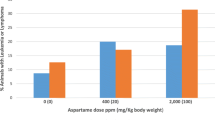Abstract.
2,4-Hexadienal (2,4-Hx), an unsaturated aldehyde formed by in vivo and in vitro peroxidation of unsaturated lipid induced, in National Toxicology Program (NTP) gavage studies of F344 rats, forestomach hyperplasia in 13-week and 2-year exposures and squamous papilloma and carcinoma in 2-year studies. Hyperplasia was characterized by thickening of all layers of epithelium with particularly prominent proliferation of the basal cells. The present investigation describes the nature and potential significance of glutathione-S-transferase-Pi (GST-Pi) immunoexpression of normal forestomach epithelium, compared to that of 2,4-Hx-related basal cell hyperplasia and squamous cell papilloma and carcinoma. Paraffin-embedded forestomachs from these NTP studies were used to investigate possible correlations between the carcinogenic process and expression of GST-Pi, a physiological metabolic barrier and an inducible phase II detoxifying enzyme suggested to decrease the responsiveness of reactive oxygen species (ROS) and organic electrophilic compounds. The amount of immunopositive staining was graded on a scale of 0 (no staining) to 4 (marked staining). The simple basal epithelium of control rats showed strong immunopositivity. In cases of basal cell hyperplasia from the 13-week and 2-year studies, these cells usually expressed strong immunopositivity for GST-Pi (grade 3 to 4). In the 2-year treated animals only, occasional focal reduction (grade 0 to 2) in immunoreactivity for GST-Pi was noted. In papillomas and squamous cell carcinomas, a wide range of GST-Pi expression was observed, perhaps indicating irregularities in its induction or change in the phenotype of these cells compared to normal or hyperplastic ones. Reduced expression of GST-Pi by the foci of basal cell hyperplasia and in tumor cells may suggest changes in cellular protection from oxidative or electrophilic DNA damage; these changes may result in genetic alterations and be the precursor to clonal expansion.
Similar content being viewed by others
Author information
Authors and Affiliations
Additional information
Electronic Publication
Rights and permissions
About this article
Cite this article
Nyska, A., Moomaw, C.R., Lomnitski, L. et al. Glutathione S-transferase Pi expression in forestomach carcinogenesis process induced by gavage-administered 2,4-hexadienal in the F344 rat. Arch Toxicol 75, 618–624 (2001). https://doi.org/10.1007/s002040100278
Received:
Accepted:
Issue Date:
DOI: https://doi.org/10.1007/s002040100278




